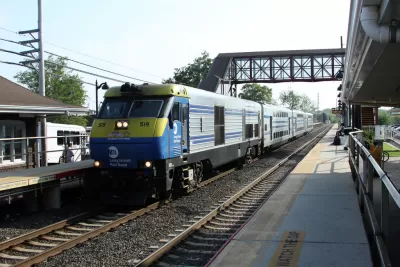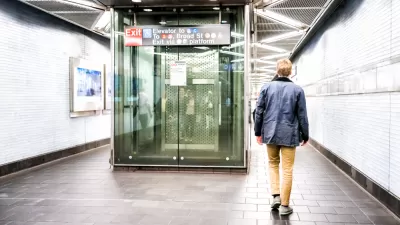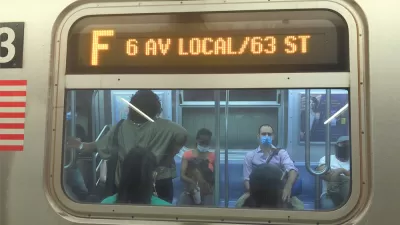Long Island's two major transit services, MTA's LIRR trains and the NICE bus system, are less coordinated than they could be. This has a big impact on ease of movement for low-income residents.

Alon Levy argues that Long Island's trains and buses suffer from a lack of coordination. The result, beyond diminished efficiency, is that low-income residents use one system while well-off commuters use another.
On one hand, "The LIRR has schedules and park-and-rides that assume passengers are affluent car owners who take the train to get to their 9-to-5 Manhattan jobs." On the other, "There's a beleaguered bus system, the Nassau Inter-County Express (NICE), formerly known as Long Island Bus. NICE ridership, already at a 15-year low five years ago, has continued to fall."
Transit on Long Island could be more efficient and equitable if the systems incorporated "fare integration, schedule integration, and integration between infrastructure and operations planning." One example of potential efficiency gains: more low-income riders could fill trains on off-hours, easing the strain on slower buses.
Levy concludes, "Can riders rely on the LIRR without memorizing a schedule? Can they use it for trips at all times of day? The lack of interest in answering these questions shows the LIRR's priority is still suburban park-and-ride passengers who go to Manhattan in the morning and return in the afternoon."
FULL STORY: On Long Island, Transit Operates as Two Separate and Unequal Systems

Planetizen Federal Action Tracker
A weekly monitor of how Trump’s orders and actions are impacting planners and planning in America.

Maui's Vacation Rental Debate Turns Ugly
Verbal attacks, misinformation campaigns and fistfights plague a high-stakes debate to convert thousands of vacation rentals into long-term housing.

Cuomo Is the Candidate of Both NIMBYs and Developers. What Gives?
In the New York City mayoral race, odd bedfellows align to preserve the housing status quo.

Amtrak Rolls Out New Orleans to Alabama “Mardi Gras” Train
The new service will operate morning and evening departures between Mobile and New Orleans.

The Subversive Car-Free Guide to Trump's Great American Road Trip
Car-free ways to access Chicagoland’s best tourist attractions.

San Antonio and Austin are Fusing Into one Massive Megaregion
The region spanning the two central Texas cities is growing fast, posing challenges for local infrastructure and water supplies.
Urban Design for Planners 1: Software Tools
This six-course series explores essential urban design concepts using open source software and equips planners with the tools they need to participate fully in the urban design process.
Planning for Universal Design
Learn the tools for implementing Universal Design in planning regulations.
Heyer Gruel & Associates PA
JM Goldson LLC
Custer County Colorado
City of Camden Redevelopment Agency
City of Astoria
Transportation Research & Education Center (TREC) at Portland State University
Jefferson Parish Government
Camden Redevelopment Agency
City of Claremont





























